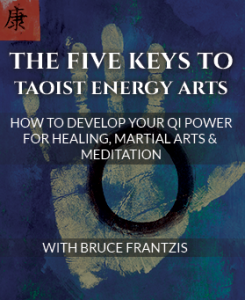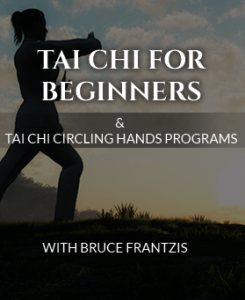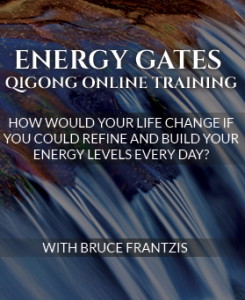Tai chi has been called moving meditation. Most often in the West we think of meditation is something that is to be done while sitting cross-legged, or in a chair. Moving meditations, however, are very useful. If you can learn to meditate while moving, then you can bring meditation into every movement that you do in life.
Practicing tai chi in a meditative way with relaxed focus is only a shadow of the deepest spiritual aspects of Taoist moving meditation.
Taoism has a rare meditation tradition that was taught to Bruce Frantzis by his Taoist teacher Liu Hung Chieh. He taught him how to incorporate the Taoist meditation practices into tai chi thus making tai chi a spiritual practice.
Most people will simply focus on tai chi’s health benefits, possibly learning the internal components that make it even more useful, however tai chi used as meditation has the capability for those who are willing and ready to take you into the core of your being and what in Taoism is called the center of the Tao or what in Buddhism is called ’emptiness’
Tai chi’s slow, graceful movements can be used as a meditation to provide relaxed focus, to quiet the monkey mind and to engender a deep sense of relaxation that helps release inner tensions.
Tai Chi as Meditation
The science of how energy flows in humans is neigong. It is the root from which all the Taoist qigong systems in China have obtained some or most of their technical information and potential capacities.
It is also the root of the essential chi work of the internal martial arts (bagua, tai chi and hsing-i), Taoist meditation, and Chinese medicine’s qigong therapies and bodywork systems.
Learning tai chi, bagua and hsing-i commonly begins with learning basic movement forms.
For example, tai chi has short or long form styles and bagua has Circle Walking and/or the Single Palm Change. Over time, neigong components are incorporated into the movements at increasingly sophisticated levels with the goal of progressively opening up all the energy channels of the body, mind and spirit.
What makes learning these components unique to energetic practices is that they are learned as a circular process. On your first pass through a particular component, you may only learn its most basic elements. Then, on the next pass, you might move on to deeper aspects that you again incorporate into your physical movements.
You return over and over again to specific neigong components to flesh out their more refined and powerful aspects and applications within the movements.
The sequence of learning the 16 components is not cast in stone, although many people find that learning the breathing and alignment components early on to be particularly useful for health and relaxation.
The sophistication of neigong is experienced by practitioners as progressive and systematic improvements in health and the energetic and spiritual capacities of the mind, body and spirit. This ever-deepening sophistication is what allows
tai chi, bagua and hsing-i to become exquisite exercises and profound meditation vehicles for Taoist spiritual practices.
Tai Chi Meditation: Finding Emptiness
In the Taoist tradition, embarking on a spiritual path goes beyond having health and a calm, peaceful mind.
The highest purpose of Taoist meditation is to make you aware of the permanent, unchanging center of your being, that place of spirit and emptiness that is Consciousness itself. This level is beyond mere physical and mental relaxation; rather it is relaxing into your soul or your very being.
Tai chi is a means for deepening your awareness of and ability to relax on all levels of your being.
The primary emphasis of practicing a tai chi form as an advanced method of Taoist meditation is to explore the nature of opposites, the nature of emptiness and non-duality. These are the concepts of tai chi and wu chi. This is practiced through tai chi’s rhythmic alternation between yin and yang through slow motion movement.
The goal in moving meditation is to find and recognize the tai chi place in your mind where these differentiation comes together and become one simultaneously within emptiness.






0 Comments